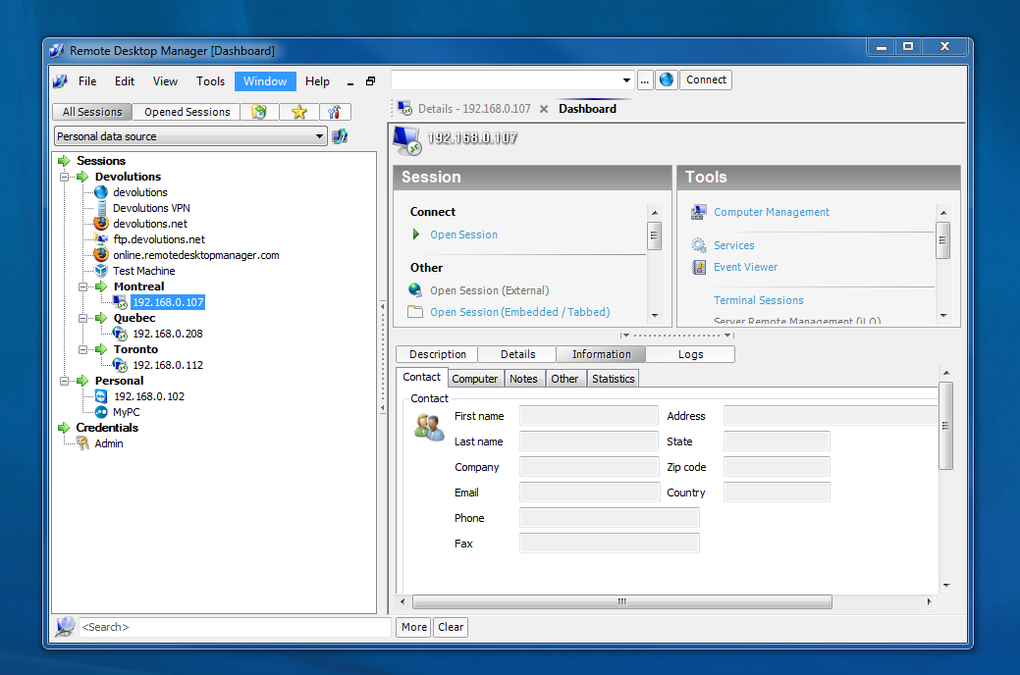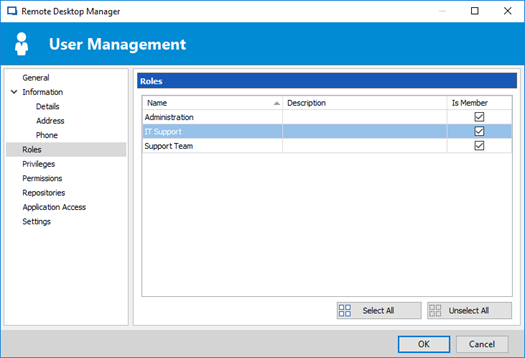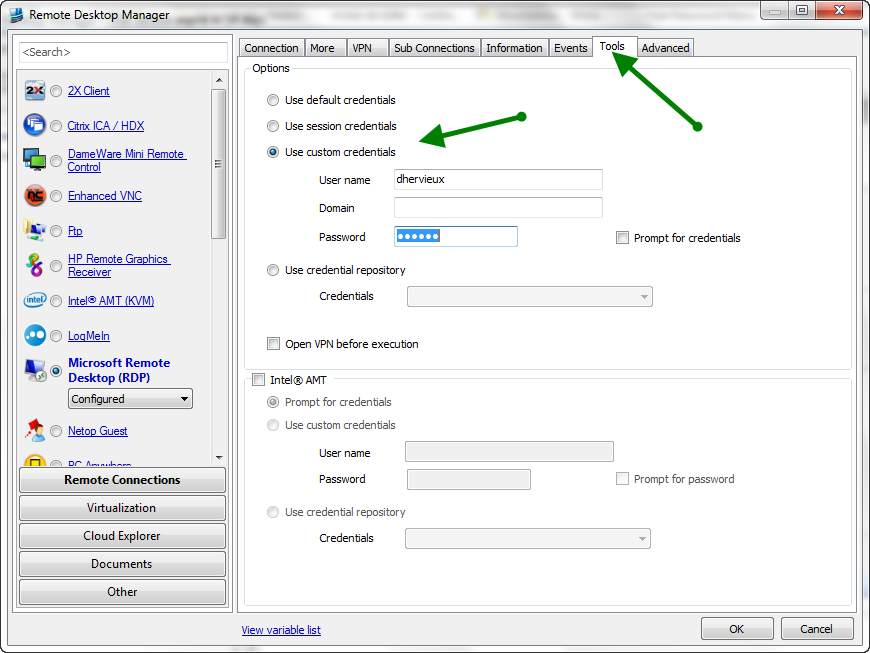
- #Devolutions remote desktop manager. install#
- #Devolutions remote desktop manager. update#
- #Devolutions remote desktop manager. trial#
- #Devolutions remote desktop manager. password#
- #Devolutions remote desktop manager. license#
Normally, root should only be allowed to connect from 'localhost'. You should remove them before moving into a This is intended only for testing, and to make the installation To log into MariaDB without having to have a user account created for Root user without the proper authorisation.īy default, a MariaDB installation has an anonymous user, allowing anyone
#Devolutions remote desktop manager. password#
Setting the root password ensures that nobody can log into the MariaDB

OK, successfully used password, moving on. You haven't set the root password yet, the password will be blank,Įnter current password for root (enter for none): In order to log into MariaDB to secure it, we'll need the current SERVERS IN PRODUCTION USE! PLEASE READ EACH STEP CAREFULLY! NOTE: RUNNING ALL PARTS OF THIS SCRIPT IS RECOMMENDED FOR ALL MariaDB Below is the output of the above wizard for reference:
#Devolutions remote desktop manager. install#
Yum -y install mariadb-server mariadb-client & systemctl start mariadb & systemctl enable mariadb & firewall-cmd -permanent -add-service mysql & systemctl restart rvice & mysql_secure_installation
#Devolutions remote desktop manager. update#
Once that is done, execute yum update to update the packages list. You may want to use SSH to copy/paste it. Use your preferred editor, nano or vi, to add a file in /etc//MariaDB.repo and add the content as seen in the screenshot. Here you can generate the details that will be inserted in the MariaDB.repo file.Īs you can see from the below screenshot, I have generated the repository settings for MariaDB 10.1 I suggest going to the Repository Configuration Tool site. To get started we need to add the MariaDB repository to the yum repository list within CentOS.

Since I am not creating a template, I do not need to install the deployment tools. Thanks goes to Simon Davies for it. I stopped at installing the Open-VM-Tools package. The VM was deployed using This guide which explains the process very well if you are not familiar, which I wasn’t to a certain extent. I am going to describe how I installed MariaDB and configure the database for use with RDM. We wanted to host the database on a virtual machine with CentOS7 installed. There was not a specific reason for this except that it supports all the features we need, like MySQL does, and most importantly the name is the same of my future daughter Maria 🙂 This would also allow us to grant certain rights to users which for example would not allow them to export the database entries or modify them.Īs a central database we opted to use MariaDB.
#Devolutions remote desktop manager. license#
We decided to purchase the Enterprise license for the product to provide us with the possibility to use a database system which could store more details like vpn phonebook and documentation like Visio diagrams or PDFs within the database with the possibility to have an up-to-date offline copy for a restricted amount of time. For example the need to manually sync the offline content, manually create the vpn entries in the phonebook with a text editor and the inability to control who has access to the content was a great concern. Although this was working well, it was limited. We used to us an SQLlite database file on a server share and with the help of a powershell script, we copied the database, vpn phone book and other add-ons to the local computer to keep an offline copy of the database should we be out of the office. It is also allows you to keep credentials stored securely. All the resources are grouped per customer so it is easy to organise and manage. In our case we assist many customers remotely and this application allows us to easily connect to the network via VPN and then we can connect to the resource where we need to make the changes/troubleshooting.

#Devolutions remote desktop manager. trial#
If you haven’t tried it already I suggest you give the Free Edition or Enterprise Trial a go.

The application allows you to build a database with the IT resources you manage. At my workplace we use the Devolutions Remote Desktop Manager (RDM) application.


 0 kommentar(er)
0 kommentar(er)
